Mexican animation producer Anima Estudios has announced production on "Top Cat Begins," a sequel to its 2011 hit "Top Cat: The Movie."
Add a CommentViewing: Blog Posts Tagged with: Mexico, Most Recent at Top [Help]
Results 26 - 50 of 100
Blog: Cartoon Brew (Login to Add to MyJacketFlap)
JacketFlap tags: Mexico, CGI, Feature Film, Hanna Barbera, Top Cat, Anima Estudios, Here Comes the Grump, Top Cat Begins, Add a tag
Blog: Cartoon Brew (Login to Add to MyJacketFlap)
JacketFlap tags: Mexico, Installations, Alejandro Garcia Caballero, Ciudad Intervenida, Llamarada, Add a tag
"They say Mexicans have a special fascination with death," writes Christian Bermejo of the Mexican animation website Tweenbox. "We don't believe it but maybe playing around with mapping in the cemetery doesn't help."
Add a CommentBlog: Cartoon Brew (Login to Add to MyJacketFlap)
JacketFlap tags: Alejandro Rodriguez Huerta, JOYFLUID, Rodriguez Brothers Animation Group, Mexico, CGI, Feature Film, motion capture, Add a tag
The animated feature "JOYFLUID" opens in a limited number of IMAX 3D theaters in Mexico this Friday. The Mexio City-produced motion capture animated film was directed by Alejandro Rodriguez Huerta and made by the Rodriguez Brothers Animation Group.
Add a CommentBlog: OUPblog (Login to Add to MyJacketFlap)
JacketFlap tags: Books, History, Religion, mexico, America, Humanities, religion in america, *Featured, Mexican-American War, patricios, pinheiro, Add a tag
By John C. Pinheiro
Few Americans today would have difficulty imagining a United States where the citizens disagree over the wisdom of immigration, question the degree to which Mexicans can be fully American, and dispute about the value of religious pluralism. But what if the America in question was not that of 2014 but rather the 1830s and 1840s? Along with being a high point of anti-Catholic nativism, these two decades witnessed the Texas Revolution, the US annexation of Texas, violence in US cities against Catholic immigrants, and the Mexican-American War. As Americans struggled to negotiate their identity as a people in terms of race, religion, and political culture, the war with Mexico clarified and for one century afterward cemented American identity as a Protestant, Anglo-Saxon republic.
Manifest Destiny held that American Anglo-Saxons, by reason of their cultural and racial superiority, were destined to overtake the western hemisphere. This Anglo-Saxonism was not so much based on attributes like skin color, as it was on unique attitudinal traits that predisposed Anglo-Saxons to be the most effective guardians of liberty. From this innate love of freedom had sprung Protestantism and republicanism—the religion and government for free men.
While the majority of Americans condemned a series of mob attacks against Catholic convents, churches, and schools in Boston and in Philadelphia, they nevertheless agreed with nativists that Catholicism was incompatible with representative—or what they called, “republican”—government. Politically unstable Mexico, they said, was proof of this.
When the United States and Mexico went to war in 1846, doubts quickly surfaced about the patriotic fortitude of foreign-born, Irish-Americans in a war against a Catholic nation. Irish immigrant soldier John Riley fled the US army on 12 April 1846, about two weeks before the first battle of the war. American authorities suspected that in September 1846 he was the leader of a group of mostly Irish and Catholic deserters at the Battle of Monterey. These rumors were true, and in late 1847 the US Army captured the San Patricios, or Saint Patrick Battalion. In the United States, debate ensued over the San Patricios’ motives and goals. At stake was the question of immigrant Catholic loyalty to the United States.
So, what were the factors in the San Patricio desertion? Abuse by nativist American officers was one of them. For a given crime, officers would sometimes merely demote native-born soldiers while imprisoning, whipping, or dishonorably discharging foreign-born men. Atrocities, church looting, and violence against priests by some American troops aggravated the fear that the Protestant United States was attacking not just Mexico but the Catholic faith.
The causes of this desertion, however, were not a one-sided affair. Mexican propaganda enticed Americans to leave their ranks. One broadside was addressed to “Catholic Irishmen” by General Antonio López de Santa Anna but the writer probably was Riley. It beckoned Americans to “Come over to us; you will be received under the laws of that truly Christian hospitality and good faith which Irish guests are entitled to expect and obtain from a Catholic nation.” It then asked, “Is religion no longer the strongest of all human bonds? Can you fight by the side of those who put fire to your temples in Boston and Philadelphia”?
It is most accurate, then, to say that while religion was involved in the defection, most of the San Patricios deserted because of intense abuse by officers, not for love of Mexico or the Catholic Church. This includes Riley. In all, 27 San Patricios were hanged.

Hanging of the San Patricios following the Battle of Chapultepec. Painted in the 1840s by Sam Chamberlain. Public domain via Wikimedia Commons.
The capture and punishment of the San Patricios may have been dramatic, but the questioning of Catholic loyalty was just one small part of religion’s interplay with the war. Religious rhetoric constituted an integral piece of nearly every major argument for or against the war. This civil religious discourse was so universally understood that recruiters, politicians, diplomats, journalists, soldiers, evangelical activists, abolitionists, and pacifists used it. It helped shape everything from debates over annexation to the treatment of enemy soldiers and civilians. Religion also was the primary tool used by Americans to interpret Mexico’s fascinating but alien culture.
More than any other event during the nineteenth century, the Mexican-American War clarified the anti-Catholic assumptions inherent to American identity. At the same time, from the crucible of war emerged an American civil religion that can only be described as a triumphalist Protestant and white, anti-Catholic republicanism. That civil religion lasted well into the twentieth century. The degree to which it is still alive today in current debates over Latino immigration is debatable, but one can hardly miss the resemblance and connection between the issues of the 1840s and those of 2014.
John C. Pinheiro is Associate Professor of History at Aquinas College in Grand Rapids, Michigan. He has written two books on the Mexican-American War. His newest book is Missionaries of Republicanism: A Religious History of the Mexican-American War.
Subscribe to the OUPblog via email or RSS.
Subscribe to only religion articles on the OUPblog via email or RSS.
The post The Mexican-American War and the making of American identity appeared first on OUPblog.
Blog: inspiration from vintage kids books and timeless modern graphic design (Login to Add to MyJacketFlap)
JacketFlap tags: Interviews, Mexico, Features, USA, Add a tag
I was first introduced to Javier Garcia through his intoxicating blog, No Barcode, where he posts his latest vintage finds. It was here that I discovered that he is an accomplished illustrator and designer in addition to having an amazing collection of design related ephemera. A resident of the Bay Area via Mexico he is developed an audience for his highly expressive and colorful illustrations. In today’s interview, the 4th part of our ongoing design in process series, Javier speaks on his passions outside of design, his workflow and more. Enjoy!
Lets start off with a little bit about your background. Where are you from originally? When and how did you become interested in design?
I was born and raised in México. I grew up drawing since I can remember so my three options when I was going to college were architecture, industrial design or graphic design. I was a bit indecisive and went for a combined industrial and graphic design major back in México. That made me realize that what I wanted to do was more graphic and so I came to the US to go to school.
Could you walk us through one of your projects? Please describe your workflow, including the tools, from pen and paper to software and devices.
I’m going to walk you through my Hail to the King illustration. First I think about what I want to say with the piece even if it’s subjective. In this case, the princes represents power which is something that both evil and good wants. I started by drawing small sketches of the general idea. Since it was a collage of illustrations, I rearranged them multiple times in sketch form until I found the right placement for them. I proceeded to drawing each character multiple times until I got the desired look keeping in mind it’s placement. Then I scan those drawings and trace them in Illustrator. In this phase I play with the scale of the characters and just moving things around. Once I got this down I proceeded to play with a bit of texture which I have created my own photoshop brushes from actual hand inked textures that I drew and scanned myself. For this piece since there wasn’t much texture I converted that to vectors but I usually work with a lot of bitmaps. I used illustrator, photoshop and a wacom tablet to do this. And that’s it!
Early sketches for Hail to the King!
Hail to the King Poster
How has your process evolved since you first started designing?
As far as designing logos, packaging and print it’s been about the same. The drawing tablet replaced my mouse at some point but it’s all been the same process which starts on sketch form in the initial stage and then it’s all computer work from there. But as far as illustration, I have been going a bit backwards. My work is turning more into the hand drawn/inked direction. I use a lot more india ink and brushes now.
Album cover for Mr. Ho’s Orchestrotica’s
Are you a creature of habit or do you like to try new technologies, applications, and features?
I’m not that much of a techie, I mostly use illustrator and photoshop to edit everything I do. Even when working with hand inked drawings I take it into photoshop and clean up/edit my files quite a bit. I try to mimmic old design and illustration techniques like inking by hand and creating textures by hand as close as possible. I feel that modern technology is not the same when it comes to translating that into the screen. I work in digital mediums but at least there’s a hand done quality to it. I can usually tell when someone used the computer to brush something. Some people are very good at it but I really enjoy the hand done process. So I think technology really speeds up my process but I don’t like to skip that human aspect phase of design.
Herb Lester Maps
What are your passions and interests outside of design and why?
This is very tough as I spend most of my time looking at design in one form or another. Architecture, pottery, furniture, interior design, and things of that sort are always on my mind. But outside design I really enjoy listening to music, surfing and being with my little boy and wife.
——
We would like to thank Javier for taking time to share with us. You can see more of his work at javiergd.com and his etsy shop.
This interview is part of the #designinprocess series brought to you by Adobe. Read all of the interviews here and follow along on Twitter and Pinterest at #designinprocess and #newcreatives.
——
Also worth viewing…
Mike Cina Interview
Katie Kirk Illustration
Ty Mattson Interview
Not signed up for the Grain Edit RSS Feed yet? Give it a try. Its free and yummy.
Thanks to Signazon for being this week's sponsor.Blog: Emily Smith Pearce (Login to Add to MyJacketFlap)
JacketFlap tags: Travel, Culture, photography, Mexico, architecture, Oaxaca, Add a tag
So, in my last post I showed you some food from our trip to Oaxaca, and here I wanted to show you a little of the town and surroundings. Excuse me if I’m a little picture happy. It was hard to choose.
Above is a street in Oaxaca, to give you an idea of the town. This street happens to be a pedestrian only zone, though I guess bench-sitters get a pass, too. Hey, if I could sit on a comfy pink bench on this street right now, I would.
Below is the Santo Domingo church. Georgeous. Love the landscaping out front, too.
And I’ve fallen hard for the church’s stone walls. The subtle color variations (and size variations, which you can see less well) are making me so, so happy. I think I’m going to have to use that colorway and grid pattern somewhere.
Up next, a convent-turned-hotel. The walls are literally three feet thick. It’s a total dream. I have a thing for thick walls and courtyard gardens.
Here and there, on the former convent walls, you’ll see little bits of painting:
And lastly, just outside Oaxaca are the pyramids of Monte Alban. From the top, the view of the area is breathtaking.
I’d love to show you some of the handicrafts Oaxaca is famous for, but I think I’ll have to show you after Christmas, since several that I bought are gifts for others.
Up next, hopefully I’ll have time to post a few Christmas-themed items. I’ve been trying to be really nose-to-the-grindstone on my writing projects. Back to work for me! Be well.
Blog: Emily Smith Pearce (Login to Add to MyJacketFlap)
JacketFlap tags: photography, Food, Travel, Culture, Mexico, cuisine, Oaxaca, Add a tag
So, the secret destination I mentioned earlier was Oaxaca (say “wah-HOCK-ah”), Mexico. I love this city! I had visited once 15 years ago and always dreamed of going back.
The capital city of the state of Oaxaca, it’s like a jewel-box deep in heart of the southern mountains of Mexico, full of stunning architecture, intricate handicrafts, and oh yes, fantastic food.
The top photo was my first meal there, an ancho chile relleno next to plaintain mash with Oaxacan cheese. Surprisingly, it was actually a lot prettier than it was flavorful, but I enjoyed trying it anyway.
Below are the appetizers from that night, including, from the back of the slate platter, cheese, guacamole, and chapulinas. Chapulinas are a Oaxacan specialty—roasted grasshoppers!
Our Mexican friends told us that if you eat one, it means you get to come back to Oaxaca. It would be a lie to say they’re my favorite dish, but I was super glad I DID eat one 15 years ago. So glad, in fact, that I ate several more, hoping I will for sure get to visit again.
Below you see chiles drying at a restaurant where we ate lunch. The set up was unusual—you walk through the kitchen area up to the roof to eat. Sadly I didn’t take pics of the wonderful chicken red mole enchiladas I had.
Mole is a type of sauce involving many ingredients, including cocoa, which was first cultivated in ancient Mesoamerica. There are many different kinds of mole, and they’re not at all sweet, so don’t worry, it’s not at all like eating candy on your meat.
From the rooftop of the lunch restaurant, there’s a view of the historic Santo Domingo church, and we had great seats to see a traditional wedding celebration going out of the church, complete with dancers, costumes, and these enormous puppets that lead the way to the reception.
Lastly, here’s a photo (from the same location) of Caldo de Piedra, or “Stone Soup.” I couldn’t actually eat it, since I can’t do shellfish, but it was fascinating to watch our chef cook it, tableside.
The rocks were heated to such a high degree that when they were placed in the bowls of raw food (shellfish and broth, veggies), the liquid immediately boiled like mad. After a few moments, the liquid cooled a bit, and the chef removed the first stones and added a second hot stone to each bowl.
If you look closely, you can see the beautiful handcarving on the bowls, which are made of what I gather is a kind of gourd.
Delicious foods not pictured: duck tacos, Oaxacan tamales (wrapped in banana leaves), hot chocolate, and eggs smothered in fantastic sauces. Breakfast was not to be missed.
More on Oaxaca to come. Hope you have a great weekend. It’s like 75 degrees here today. I can’t believe it’s December!
Blog: (Login to Add to MyJacketFlap)
JacketFlap tags: Chile, Uncategorized, Canada, Japan, Taiwan, Amazon, Philippines, Mexico, France, Australia, India, Poland, Germany, New Zealand, Pakistan, Puerto Rico, Belgium, Spain, Slovenia, United Kingdom, Finland, South Africa, Brazil, Singapore, Nicaragua, Ireland, Netherlands, Italy, Turkey, Israel, Switzerland, Nigeria, Sweden, Indonesia, Mongolia, Thailand, Argentina, Morocco, Peru, Jamaica, Norway, Egypt, Indiebound, Iceland, Venezuela, Bahamas, Denmark, Greece, United States, Portugal, Czech Republic, Colombia, Romania, Croatia, Saudi Arabia, Hong Kong, Ukraine, Jordan, Yemen, Algeria, Hungary, Bermuda, Ecuador, Bulgaria, Estonia, Tunisia, Trinidad and Tobago, Girls Sports, Bahrain, Lithuania, Namibia, United Arab Emirates, Grant Overstake, Inspirational Sports Stories, Maggie Vaults Over the Moon, young adult sports, KSHSAA, Pole Vault Fiction, Track and Field Stories, sports novels, Recommended sports books for teens, Watermark Books and Cafe, Kansas State High School Activities Association Journal, Austria Botswana, Insirational Sports Books, Isle of Man, Republic of Korea, Russian Federation, Add a tag
Maggie Steele, the storybook heroine who vaults over the moon, has been attracting thousands of visitors from around the world. So many visitors, in fact, that she’s using a time zone map to keep track of them all.* People are … Continue reading ![]()
Blog: The Cath in the Hat (Login to Add to MyJacketFlap)
JacketFlap tags: Nino Wrestles the World, Yuyi Morales; multicultural, picture book, Mexico, wrestling, Add a tag
When two of my nephews were around six and seven nothing delighted them more than tuning in to Thursday night's wrestling shows. Naturally, they refused any adult's attempt to inform them that the performances were fake. When I read this page-turning picture book, I thought of them (now young adults) and how much they would have enjoyed it.
The nino of this title sports a pair of tighty whities and not much else. Using his way too active imagination, he casts himself as a luchadore, a professional wrestler popular in Mexico and other Spanish-speaking countries. Nino's opponents are nothing to sneeze at. What I liked best about this book was Morales' depiction of these truly scary characters. There's La Momia de Guanajuato, a zombie-like creature; Cabeza Olmeca, an ancient stone-head sculpture; La Llorona, a ghost, El Extraterrestre, a space alien; and El Chamuco, the devil himself. Nino creatively dispatches his opponents with ease--until, that is, he faces his most fearsome match. Las Hermanitas, his twin sisters, wake from their nap and gleefully attack their big brother.
The bold art offers surprises on every page and the graphic text adds to the excitement. An informative end note explains lucha libre, Mexican professional wrestling, in greater detail. Great fun!
Blog: Cartoon Brew (Login to Add to MyJacketFlap)
JacketFlap tags: Day of the Dead, Pixar, The Book of Life, Guillermo del Toro, Lee Unkrich, Día de los Muertos, Jorge Gutierrez, Mexico, Disney, Ideas/Commentary, Add a tag

Last week after word got out that Disney was seeking to trademark “Día de los Muertos” in preparation for its 2015 release of a Pixar animated feature inspired by the traditional Mexican holiday, several online communities were outraged. The backlash kicked into high gear when cartoonist and illustrator Lalo Alcaraz shared a poster of a Godzilla-like Mickey Mouse under the words, “It’s coming to trademark your cultura.” [image above]
Social media has always kept Disney in check, and this time is no different. Latino Rebels, an online community that has done a terrific job of tracking Disney’s depiction of Latino culture, helped handle and report on the groundswell of public outcry over the last few weeks. After several petitions and pressure, Disney announced last Tuesday that they would withdraw the trademark filing, claiming that it was no longer necessary since they had changed the title of the fim.
In an interview with Cartoon Brew, William Nericcio, a scholar specializing in the representation of Latinos in American pop culture and author of Tex[t]-Mex: Seductive Hallucinations of the “Mexican” in America, said, “[Hollywood's] attitude towards culture is like a pelt hunter from the 19th century. They need the skin that people recognize and value in order to sell a project that will yield predictable profits.”
Nericcio acknowledges that Pixar and Disney face an uphill battle in producing their Day of the Dead feature, which is to be directed by Toy Story 3 helmer Lee Unkrich: ”I think it’s wonderful that Pixar is working on a Mexico, cultural-based project. But it’s a public relations nightmare. They’re not really equipped to talk about other cultures in a way that shows even the slightest sensitivity.”
While Nericcio supports the critical eye cast by social media, he does express concerns over extreme backlash. “The downside of it is, companies like Disney could get scared off of projects that might be focused on Latin American culture, just because they got burned,” he explains. Ultimately, the appeal of a Dia de Los Muertos film is undeniable; the imagery connected to the celebration is so lush, providing a palette that would inspire any moviegoer. “It’s good business to green light a project on la cultura Mexicana. Everybody’s loving the wrestlers, the icons, the color, the exoticness,” Nericcio says. “But when you have the patent lawyers involved, they come off looking terrible.”
Nericcio, a self-admitted Pixar fan would love to see a Dia de los Muertos animated film, as would so many others. Fortunately, there’s another film on the horizon—Guillermo del Toro and Jorge Gutierrez are currently producing and directing (respectively) their own Day of the Dead-themed feature at Reel FX called The Book of Life, to be released through Fox in October of 2014, more than a year before the Disney-Pixar feature. There’s no word yet whether Mexico-born del Toro and Gutierrez will seek trademarks of their own.
Add a CommentBlog: Sylvan Dell Publishing's Blog (Login to Add to MyJacketFlap)
JacketFlap tags: party, fun, history, celebration, mexico, holiday, spanish, cinco de mayo, Sylvan Dell Posts, nature recycles, balloon trees, deductive detective, Add a tag
On May 5th, around the United States and Mexico, colorful decorations will hang, mariachi bands will play, and people will party in the street to celebrate Cinco de Mayo. This holiday celebrates Mexican culture – the music, the traditions, the food, but why, exactly, are we celebrating on this day? Some people think that Cinco de Mayo marks the day when Mexico became independent from Spain, or when the Mexican Civil War ended. Nope! Actually, Cinco de Mayo celebrates a battle in a war that Mexico lost!
Mexico had a tough start as a country, enduring war after war, first against America in 1846, then against themselves in the Mexican Civil War. When all this was over, the country had spent so much on war that there was very little money for regular people to spend in their lives; in other words, the economy was hurt. As countries sometimes do, Mexico borrowed money from other nations in order to help itself. And, as friends sometimes do when you borrow a toy or book from them, those countries got tired of waiting for Mexico to give their property back and came over to collect. No, their moms didn’t drive them over in the van or anything like that; fleets of warships representing England, Spain and France crossed the Atlantic Ocean, entered the Mexican coastline and demanded that Mexico pay them back.
Mexico didn’t have the money to pay them though! What’s a young country to do?! All they had were vouchers to give to the representatives from these countries, papers that double-super-promised to someday pay them back. This satisfied England and Spain and they went home, but to France, this meant war! Sacre bleu!
Under the command of Napoleon III, France invaded Mexico with the intention to totally control it. They marched from the coastline to Mexico City, and on the way passed the small Mexican state of Puebla. The Mexican soldiers at Puebla were vastly outnumbered, but in this fight on May 5, 1862, called La Batalla de Puebla, Mexico somehow overcame the odds and defeated the French forces! Now that’s reason to celebrate!
France eventually managed to occupy Mexico, but they were delayed a whole year by this surprising Mexican victory. The shocking, underdog victory at Puebla has come to symbolize the Mexican spirit of resilience and tenacity. Therefore, on its anniversary every year, Mexico and places with many people of Mexican descent play Cumbia music, wave the Mexican flag, eat tamales, hit pinatas, and generally celebrate all things Mexico!
Of course, at Sylvan Dell we celebrate Mexican people and culture every day! Each and every one of our dozens of titles are available in Spanish, such as Los árboles de globos and La naturaleza recicla—¿Lo haces tú? and El detective deductive!
Blog: inspiration from vintage kids books and timeless modern graphic design (Login to Add to MyJacketFlap)
JacketFlap tags: Canada, Mexico, contemporary, Found design, identity, Add a tag
Face. is an international design agency with a global perspective and a focus on branding. Founded in 2006, Face. has already created some impressive designs that showcase their modernist flair. Although many of their pieces are done in a straightforward style, they keep it fresh with fun color palettes and intriguing typography. Having already created multiple offices across North America in their short life span, keep an eye on Face. for their next move.
——————–
Also worth viewing:
Laura Cattaneo aka Half Past Twelve
Colorcubic
Sanna Annukka Shop
Not signed up for the Grain Edit RSS Feed yet? Give it a try. Its free and yummy.
Featured Book: Irving Harper: Works in Paper.A Huge thanks to Squarespace for sponsoring this week’s RSS Feed!
Blog: OUPblog (Login to Add to MyJacketFlap)
JacketFlap tags: History, US, Oxford, mexico, Current Affairs, immigration, Geography, border, Berlin Wall, Tijuana, *Featured, Mexican-American War, Guadalupe Hidalgo, Michael Dear, Polk, Third Nation, nafta, Add a tag
By Michael Dear
Not long ago, I passed a roadside sign in New Mexico which read: “Es una frontera, no una barrera / It’s a border, not a barrier.” This got me thinking about the nature of the international boundary line separating the US from Mexico. The sign’s message seemed accurate, but what exactly did it mean?
On 2 February 1848, a ‘Treaty of Peace, Friendship, Limits and Settlement’ was signed at Guadalupe Hidalgo, thus terminating the Mexican-American War. The conflict was ostensibly about securing the boundary of the recently-annexed state of Texas, but it was clear from the outset that US President Polk’s ambition was territorial expansion. As consequences of the Treaty, Mexico gained peace and $15 million, but eventually lost one-half of its territory; the US achieved the largest land grab in its history through a war that many (including Ulysses S. Grant) regarded as dishonorable.
In recent years, I’ve traveled the entire length of the 2,000-mile US-Mexico border many times, on both sides. There are so many unexpected and inspiring places! Mutual interdependence has always been the hallmark of cross-border communities. Border people are staunchly independent and composed of many cultures with mixed loyalties. They get along perfectly well with people on the other side, but remain distrustful of far-distant national capitals. The border states are among the fastest-growing regions in both countries — places of economic dynamism, teeming contradiction, and vibrant political and cultural change.

A small fence separates densely populated Tijuana, Mexico, right, from the United States in the Border Patrol’s San Diego Sector.
Yet the border is also a place of enormous tension associated with undocumented migration and drug wars. Neither of these problems has its source in the borderlands, but border communities are where the burdens of enforcement are geographically concentrated. It’s because of our country’s obsession with security, immigration, and drugs that after 9/11 the US built massive fortifications between the two nations, and in so doing, threatened the well-being of cross-border communities.
I call the spaces between Mexico and the US a ‘third nation.’ It’s not a sovereign state, I realize, but it contains many of the elements that would otherwise warrant that title, such as a shared identity, common history, and joint traditions. Border dwellers on both sides readily assert that they have more in common with each other than with their host nations. People describe themselves as ‘transborder citizens.’ One man who crossed daily, living and working on both sides, told me: “I forget which side of the border I’m on.” The boundary line is a connective membrane, not a separation. It’s easy to reimagine these bi-national communities as a ‘third nation’ slotted snugly in the space between two countries. (The existing Tohono O’Odham Indian Nation already extends across the borderline in the states of Arizona and Sonora.)
But there is more to the third nation than a cognitive awareness. Both sides are also deeply connected through trade, family, leisure, shopping, culture, and legal connections. Border-dwellers’ lives are intimately connected by their everyday material lives, and buttressed by innumerable formal and informal institutional arrangements (NAFTA, for example, as well as water and environmental conservation agreements). Continuity and connectivity across the border line existed for centuries before the border was put in place, even back to the Spanish colonial era and prehistoric Mesoamerican times.
Do the new fortifications built by the US government since 9/11 pose a threat to the well-being of borderland communities? Certainly there’s been interruptions to cross-border lives: crossing times have increased; the number of US Border Patrol ‘boots on ground’ has doubled; and a new ‘gulag’ of detention centers has been instituted to apprehend, prosecute and deport all undocumented migrants. But trade has continued to increase, and cross-border lives are undiminished. US governments are opening up new and expanded border crossing facilities (known as ports of entry) at record levels. Gas prices in Mexican border towns are tied to the cost of gasoline on the other side. The third nation is essential to the prosperity of both countries.
So yes, the roadside sign in New Mexico was correct. The line between Mexico and the US is a border in the geopolitical sense, but it is submerged by communities that do not regard it as a barrier to centuries-old cross-border intercourse. The international boundary line is only just over a century-and-a-half old. Historically, there was no barrier; and the border is not a barrier nowadays.
The walls between Mexico and the US will come down. Walls always do. The Berlin Wall was torn down virtually overnight, its fragments sold as souvenirs of a calamitous Cold War. The Great Wall of China was transformed into a global tourist attraction. Left untended, the US-Mexico Wall will collapse under the combined assault of avid recyclers, souvenir hunters, and local residents offended by its mere presence.
As the US prepares once again to consider immigration reform, let the focus this time be on immigration and integration. The framers of the Treaty of Guadalupe Hidalgo were charged with making the US-Mexico border, but on this anniversary of the Treaty’s signing, we may best honor the past by exploring a future when the border no longer exists. Learning from the lives of cross-border communities in the third nation would be an appropriate place to begin.
Michael Dear is a professor in the College of Environmental Design at the University of California, Berkeley, and author of Why Walls Won’t Work: Repairing the US-Mexico Divide (Oxford University Press).
Subscribe to the OUPblog via email or RSS.
Subscribe to only American history articles on the OUPblog via email or RSS.
The post “Third Nation” along the US-Mexico border appeared first on OUPblog.
Blog: Kid Lit Reviews (Login to Add to MyJacketFlap)
JacketFlap tags: science, sun, sky, Sonoran Desert, Sylvan Dell Publishing, scorpions, turkey vulture, sundials, scaled quail, western-banded gecko, skylines, Southwest USA, sun and moon patterns, sun rises east, sun sets west, time of day, roadrunner, geography, biology, ecology, darcy pattison, bats, coyote, bathing, baths, desert habitat, bobcats, desert tortoise, diamondback rattler, does, geckos, Chihuahua Desert, desert animals, grades 1 to 5, Children's Books, NonFiction, children's nonfiction, animal behavior, adaptations, 5stars, Library Donated Books, animal hygiene, Kathleen Rietz, hygiene, javelina, Great Basin Desert, high noon, Mexico, animals, Anna's hummingbird, moon, mule deer, Mojave Desert, moon rises east, moon sets west, pallid bat, Add a tag
5 Stars Desert Baths Darcy Pattison Kathleen Rietz Syvan Dell Publishing 32 Pages Ages 4 to 8 ………………….. Inside Jacket: As the sun and the moon travel across the sky, learn how twelve different desert animals face the difficulty of stay clean in a dray and parched land. Explore the desert habitat through its animals [...]![]()
Blog: Kid Lit Reviews (Login to Add to MyJacketFlap)
JacketFlap tags: Children's Books, Interviews, NonFiction, animals, Oregon, Mexico, California, Kathleen Rietz, Colorado, Arizona, Idaho, Wyoming, rattlesnakes, eagles, desert, open, darcy pattison, bats, coyotes, wild animals, hummingbirds, Sylvan Dell Publishing, bobcat, turkey vulture, Prairie Storms, javelina, 5stars, roadrunner, Library Donated Books, Desert Baths, Anna's hummingbird, arid, desert tortoise, diamondback rattler, does, geckos, mule deer, nighttime stars, scaled quail, western United States, western-banded gecko, Add a tag
……………………… Kathleen Rietz Illustrator, Desert Baths with author Darcy Pattison ……………….. Please welcome to Kid Lit Reviews a prolific children’s book illustrator and fine artist Kathleen Rietz. She is here to chat with us about herself and her new book with Darcy Pattison titled Desert Baths. Hi, Kathleen, let’s start off with what first interested [...]![]()
Blog: Cartoon Brew (Login to Add to MyJacketFlap)
JacketFlap tags: Mexico, Feature Film, Alejandro Lozano, Andrés Couturier, Átomo Films, El Santos vs La Tetona Mendoza, Add a tag
Animators in Mexico don’t appear content to simply copy the predictable, formula-ridden animated features of their American neighbors. The trailer above is for El Santos vs. la Tetona Mendoza (The Saint vs. The Busty Mendoza), which judging by its trailer, is a refreshingly crude, raunchy and cartoony use of hand-drawn animation. Based on a comic by Trino Camacho and José Ignacio Solórzano (aka Jis), and directed by Alejandro Lozano and Andrés Couturier, the film opens on November 30th in Mexico. It was animated by Átomo Films (a subsidiary of Ánima Estudios).
Add a CommentBlog: Stacy Whitman's Grimoire (Login to Add to MyJacketFlap)
JacketFlap tags: mexico, geekiness, texas, magical realism, guadalupe garcia mccall, tu, summer of the mariposas, isaac stewart, young adult literature, diversity, fantasy, Add a tag
Check it out at The Open Book!
Originally published at Stacy Whitman's Grimoire. You can comment here or there.
Add a CommentBlog: PaperTigers (Login to Add to MyJacketFlap)
JacketFlap tags: Cultures and Countries, Mexican American, and Folktales from Latin America, Week-end book review, Juan the Bear and the Water of Life / La Acequia de Juan del Oso, The Three Juanes, University of New Mexico Press, Mexico, Bilingual books, Enrique R. Lamadrid, Amy Córdova, Juan Estevan Arellano, bilingual children's books, Add a tag
 Enrique R. Lamadrid and Juan Estevan Arellano, illustrated by Amy Córdova,
Enrique R. Lamadrid and Juan Estevan Arellano, illustrated by Amy Córdova,
Juan the Bear and the Water of Life / La Acequia de Juan del Oso
University of New Mexico Press, 2008.
Ages: 7+
The 19th century waterways that irrigate the Upper Mora Valley in New Mexico’s Sangre de Cristo Mountains are a marvel of engineering to this day. In places, the water seems to defy gravity, and no one is quite sure how the people who built them—lacking tools as basic as a metal-bladed shovel—accomplished it. Though the history of their construction is lost, stories about the dedicated pioneers who built them have evolved, through oral tradition, into regional legends presented here in picture-book form.
La Acequia de Juan del Oso comes from the story of “The Three Juanes”: the remarkably strong Juan del Oso, son of a local woman and a bear; Juan Mudacerros, who moves mountains; and Juan Mudarríos, who can change the course of rivers. Folklorists Enrique R. Lamadrid and Juan Estevan Arellano recognize similar characters in Spanish tradition, from which the acequia technology of the American Southwest is also derived. The super-human young men, all of them exiled from their communities as a result of unintentionally misusing their special strengths and powers, work together as only they can to bring the water up and over the mountain. Amy Córdova’s rich and colorful illustrations bring the landscape and characters to life in this story that is not only about the reward of hard work but also the pain of exclusion and the value of community.
The authors skillfully incorporate what is known about the building of the canals (such as rudimentary tools, including a half-empty brandy bottle used as a level) with the legend of the boy whose mother married a bear but is forced to return home. When an innocent swipe seriously injures another child, the half-bear Juan flees to the woods where he finds his welcoming father and the other legendary Juanes. Together they accomplish the work that enables the expanding village population to inhabit a valley on the other side of the mountain. This book brings both the folktale and the limited known history of the acequia together in a way that celebrates not only the past and the legends but also the people who live in the Mora Valley today who continue to make a beautiful life in this stark, arid, and high-altitude environment.
Abigail Sawyer
May 2012
Blog: Hazel Mitchell (Login to Add to MyJacketFlap)
JacketFlap tags: children's illustration, parrot, little boy, Mexican, Hazel Mitchell, sketch for today, drawing digitally, children's books, mexico, Add a tag
Blog: PaperTigers (Login to Add to MyJacketFlap)
JacketFlap tags: Picture Books, Mexico, Latin America, Cinco Puntos Press, Week-end Book Reviews, Week-end book review, Colores de la vida, Cynthia Weill, Oaxaca folk art, Add a tag

Cynthia Weill, illustrated with folk art by Artisans from Oaxaca,
Colores de la vida: Mexican Folk Art Colors in English and Spanish
Cinco Puntos Press, 2011.
Ages: 2+
Hypnotic. The word is hypnotic. A deep green lizard with a jolting yellow band around its neck leaps off the light green page – literally. Green / verde. Two white polar bears curve into the even whiter page, fine black lines of their fearsome claws made bold by the painter’s brush. White / blanco. From full-color spread to full-color spread, Cynthia Weill uses hypnotic photographs of folk art figures from artisans from Oaxaca to illustrate the beauty, art, and vibrancy of the Colores de la vida, colors of life, in an unforgettable book as much about the wonder of the ways we can imagine the world around us as about names of colors.
Anyone who has had the pleasure of reading ABeCedarios (2007) or Opuestos (2009) will recognize the stylized, vibrantly-painted Oaxacan figures arranged in sets of twos and threes on each spread of marbleized papers in the same hues. Like her previous two books in the highly successful “First Concepts in Mexican Folk Art” series, Author Cynthia Weill brilliantly illustrates the theme of the book – colors – using folk art from other nations and culture. Using friendships formed and connections made during her time in Mexico as a Fullbright scholar, Weill employs artisans from across Oaxaca, both aspiring and well-known, to create the ceramic, tin, wood-carved and papier-mâché figures used.
Colores de la vida supplies minimal text, placing only a single word, the color name, printed in its namesake hue in English and Spanish. This lack of explanation or words, including what the animals actually are, reinforces the irresistible draw between viewer and animal figure. What are those extraordinary winged yellow figures heralding irrepressible glee as an egg hatches a third figure near them. A dragon? Another mythical figure? Each page captures a sense of wonder, of the vibrancy of color, the imagination of the artist, the name of the hue. Colors take life in this small picture book, perfect for small hands, in an astonishing pairing of visual intimacy and artistic joy that make this one of the most distinctive recent books on color – in English or otherwise.
Sara Hudson
April 2011
Blog: Whateverings (Login to Add to MyJacketFlap)
JacketFlap tags: going south, winter, Illustration Friday, mexico, fly, florida, paula j. becker, paula becker, geese, return, ducks, flying, north, Cartoons & Comics, mallard, Add a tag
An Illustration Friday submission for the word “return”. Duck is all nice and tanned from his stay in the sunny south!
Blog: OUPblog (Login to Add to MyJacketFlap)
JacketFlap tags: A Great Aridness, rising temperature, William deBuys, debuys, aridness, shortages, pushcart, 6biiq48gdv0, global warming, Video, environment, mexico, Dust Bowl, climate change, southwest, wildfire, water shortage, American Southwest, *Featured, Environmental & Life Sciences, Science & Medicine, freshwater, Add a tag
Is staggering population growth and intensifying effects of climate change driving the oasis-based society of the American Southwest close to the brink of a Dust-Bowl-scale catastrophe?
Today is International World Water Day. Held annually on 22 March, it focuses attention on the importance of freshwater and advocating for the sustainable management of freshwater resources.
We sat down with William deBuys, author of A Great Aridness: Climate Change and the Future of the American Southwest, to discuss what lies ahead for Arizona, California, Colorado, Nevada, New Mexico, Oklahoma, Texas and Utah. This semi-arid land, vulnerable to water shortages, rising temperatures, wildfires, and a host of other environmental challenges, is poised to bear the heaviest consequences of global environmental change in the United States. It is also a window to the world, from the dangers of water shortages in already fragile political regions to hopes in human intelligence and ingenuity.
Click here to view the embedded video.
William deBuys is the author of six books, including A Great Aridness: Climate Change and the Future of the American Southwest; River of Traps: A New Mexico Mountain Life, a New York Times Notable Book of the Year and a finalist for the Pulitzer Prize in general non-fiction in 1991; Enchantment and Exploitation: The Life and Hard Times of a New Mexico Mountain Range; The Walk (an excerpt of which won a Pushcart Prize in 2008), and Salt Dreams: Land and Water in Low-Down California. An active conservationist, deBuys has helped protect more than 150,000 acres in New Mexico, Arizona, and North Carolina. He lives and writes on a small farm in northern New Mexico.
Subscribe to the OUPblog via email or RSS.
View more about this book on the ![]()
Blog: OUPblog (Login to Add to MyJacketFlap)
JacketFlap tags: Religion, mexico, christianity, tepeyac, virgin, This Day in History, Latin America, guadalupe, diego, virgin mary, basilica, catholicism, *Featured, higher education, bishop, this day in world history, our lady of guadalupe, 1531, cloak, Add a tag
This Day in World History
December 12, 1531
Virgin of Guadalupe appears to Mexican peasant
 According to the tradition accepted by the Roman Catholic Church, a fifty-five-year old Native American who had converted to Christianity was moving down Tepeyac Hill to a church in Mexico City to attend mass. Suddenly, he beheld a vision of the Virgin Mary, mother of Jesus Christ and an iconic figure in the Catholic Church. She instructed him to tell the local bishop to build a shrine to her on the spot. The Native American, Juan Diego, hurried to the bishop to relate the story. The bishop was intrigued but unconvinced; he needed proof, he said. Three days after the first encounter, on December 12, 1531, Diego saw the vision again. Asking for a sign, Mary told him to gather roses and carry them in his cloak to the bishop. When Diego opened his cloak and the roses fell out, the image of the Virgin Mary was embedded in the fabric of the inside of the cloak. A shrine was built on the site, and later a basilica.
According to the tradition accepted by the Roman Catholic Church, a fifty-five-year old Native American who had converted to Christianity was moving down Tepeyac Hill to a church in Mexico City to attend mass. Suddenly, he beheld a vision of the Virgin Mary, mother of Jesus Christ and an iconic figure in the Catholic Church. She instructed him to tell the local bishop to build a shrine to her on the spot. The Native American, Juan Diego, hurried to the bishop to relate the story. The bishop was intrigued but unconvinced; he needed proof, he said. Three days after the first encounter, on December 12, 1531, Diego saw the vision again. Asking for a sign, Mary told him to gather roses and carry them in his cloak to the bishop. When Diego opened his cloak and the roses fell out, the image of the Virgin Mary was embedded in the fabric of the inside of the cloak. A shrine was built on the site, and later a basilica.
The account is not universally accepted. The bishop identified in the story did not reach office until three years after the visitation was said to take place, and his papers say nothing of the event nor of Juan Diego. Indeed, documentary evidence about the visitation comes from more than a century later. Nevertheless, since the 1550s, the site has been home to a shrine—one of many dedicated to Our Lady of Guadalupe across Mexico. The Virgin of Guadalupe was named the patron saint of Mexico and recently was named the patroness of all the Americas. She has long been a national symbol for Mexicans. Today, the basilica in Tepeyac Hill contains a cloth said to be the original cloak—and is a much-visited pilgrimage destination.
“This Day in World History” is brought to you by USA Higher Education.
You can subscribe to these posts via RSS or receive them by email.
Blog: Sugar Frosted Goodness (Login to Add to MyJacketFlap)
JacketFlap tags: artist, doll, skeleton, art, animation, Mexico, disney, paint, day of the dead, dia de los muertos, Mary Blair, Skull, small world, calavera, daisy church, The Iconoclastic Dead, Add a tag
Blog: Sugar Frosted Goodness (Login to Add to MyJacketFlap)
JacketFlap tags: Mexico, day of the dead, dia de los muertos, Mexico City, Guru, chogrin, the autumn society, The Iconoclastic Dead, Guru Gallery Shop, German Orozco, Jorsh Pena, Galeria Guru, Add a tag
The Iconoclastic Dead will take place at Galeria Guru (www.gurugalleryshop.com) in Mexico City. The show premieres Saturday October 1st (6pm-12am) and runs to the end of the month (October 31st).
It will feature over 40 pieces of artwork by members of the Autumn Society and other special guests!
Live music and drinks will be present at the show as well! It is the Autumn Society's #1 event of the year, so you don't want to miss it!
The Iconoclastic Dead is curated & produced by German Orozco (www.germanorozco.com), Chogrin (www.chogrin.com), & Jorsh Pena (mrjorshpena.blogspot.com)
Gurú Tienda Galería
Colima 143, LA ROMA
Mexico City, Mexico
FACEBOOK: http://www.facebook.com/ev
---------------
For more info, check out these links:
www.theautumnsociety.com
www.gurugalleryshop.com
http://www.theautumnsociet
http://www.facebook.com/ev
View Next 25 Posts





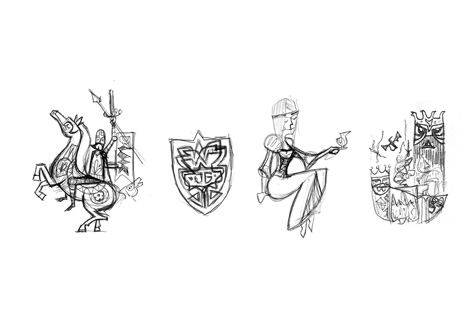

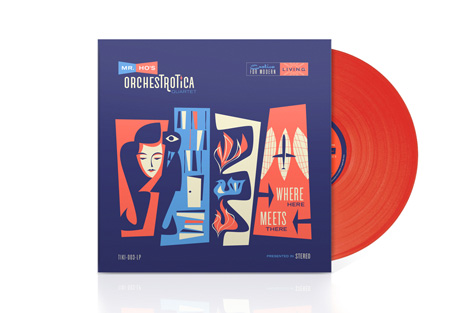
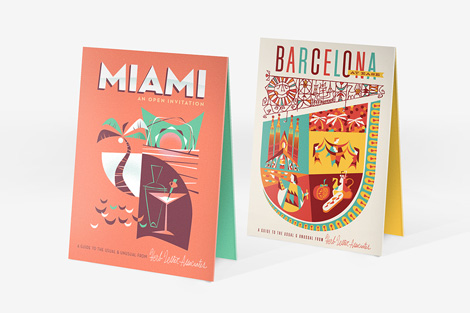
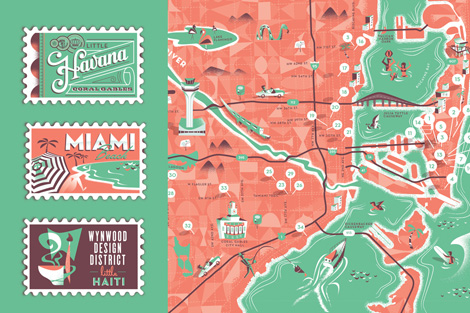

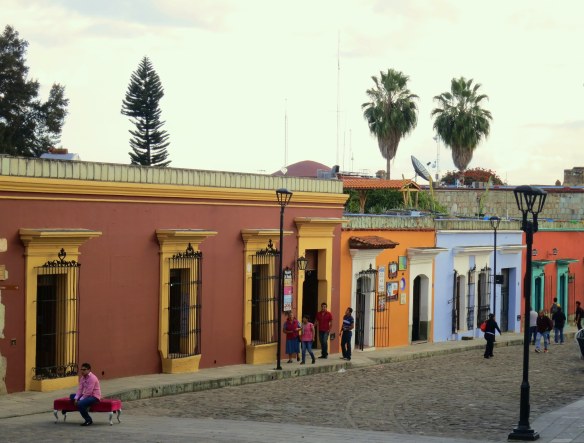
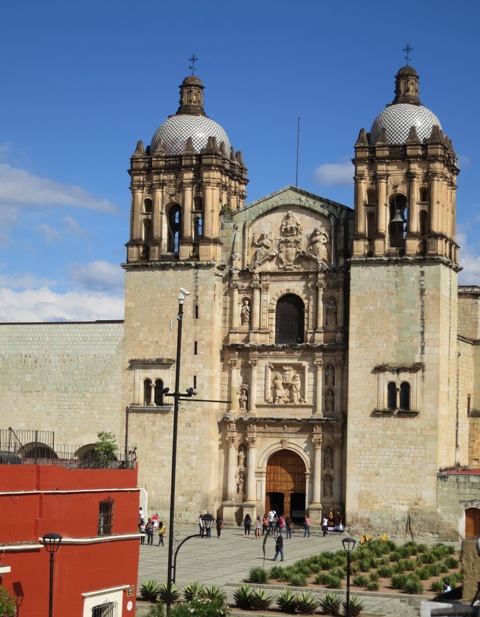
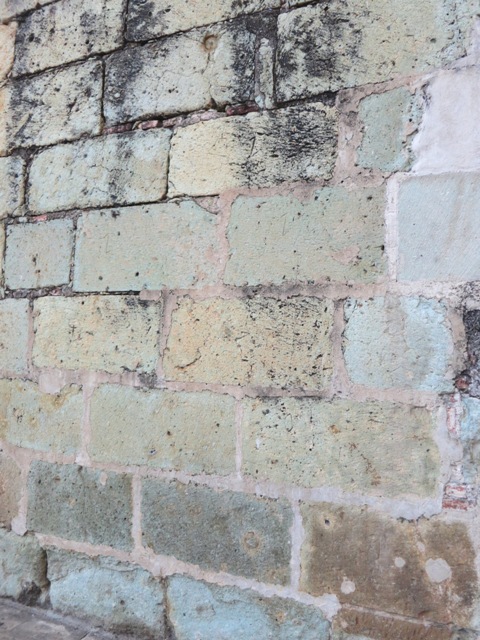
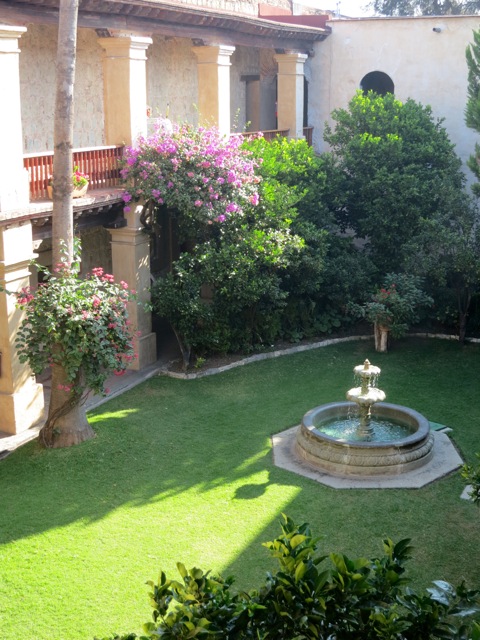
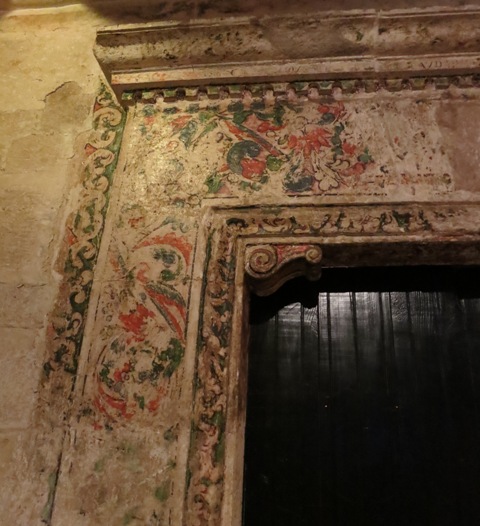


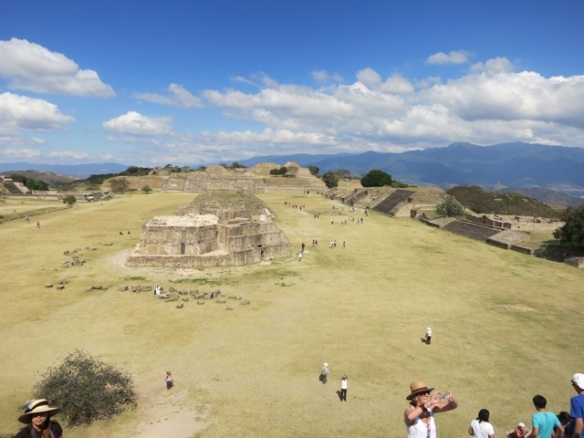

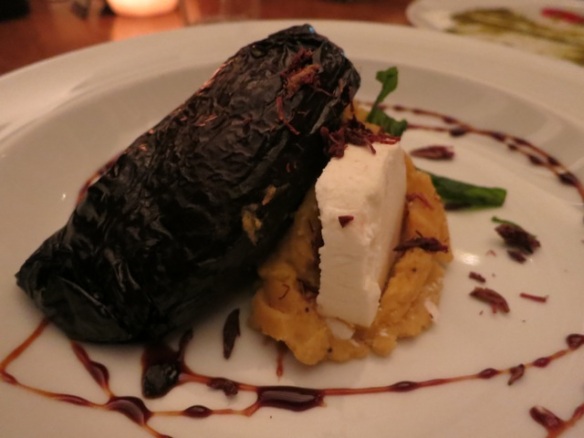
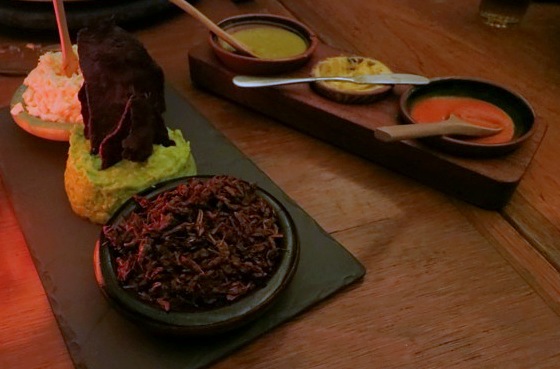
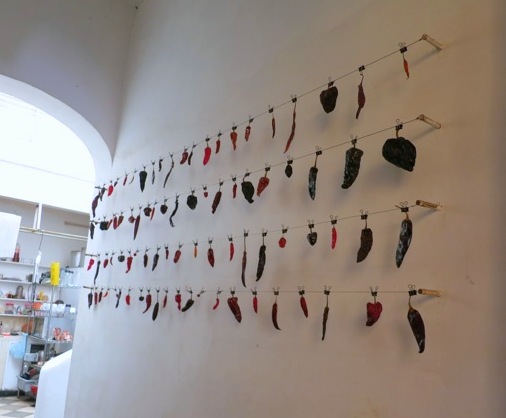








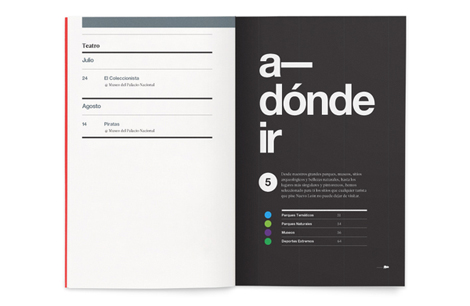






You sort of failed to mention this to me the other night! So happy you could go! Love the pics.
Hi Joyce! I’m sorry there wasn’t time to chat more—or to finish our convo at the end! Glad you enjoyed the pics. It was incredible. More to come.